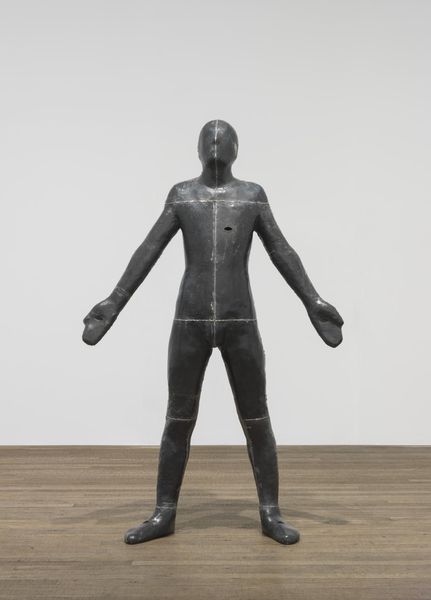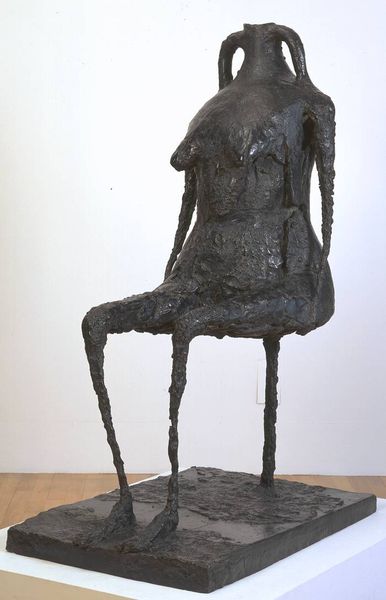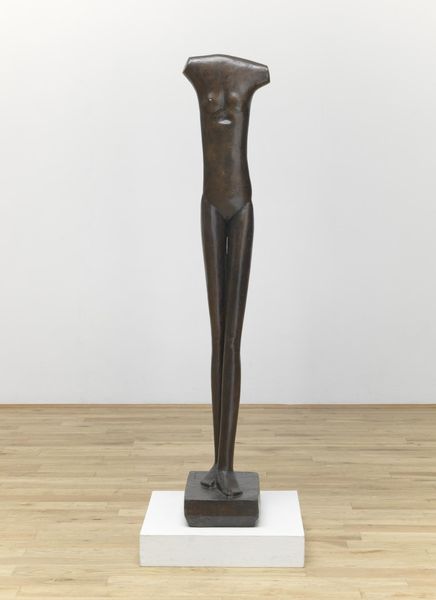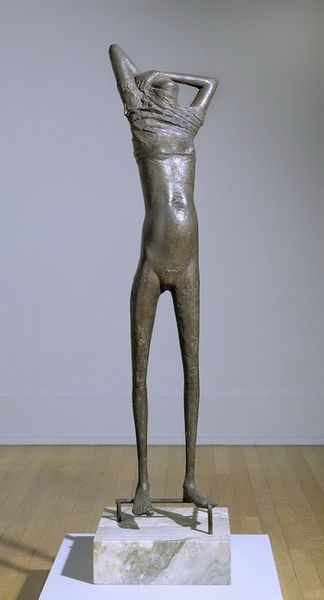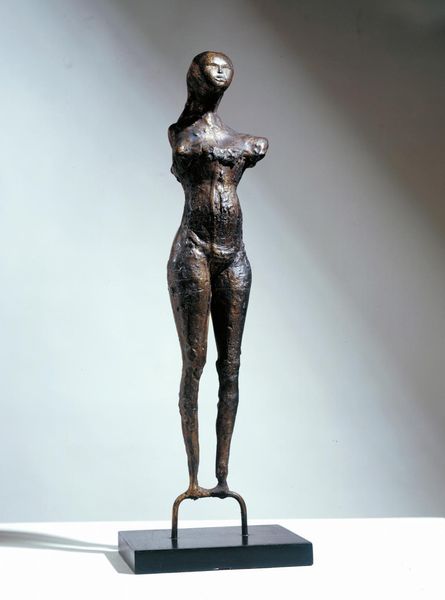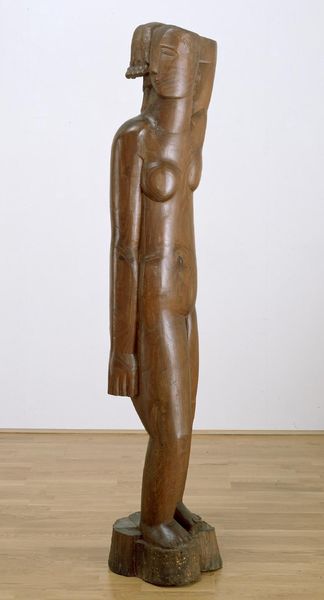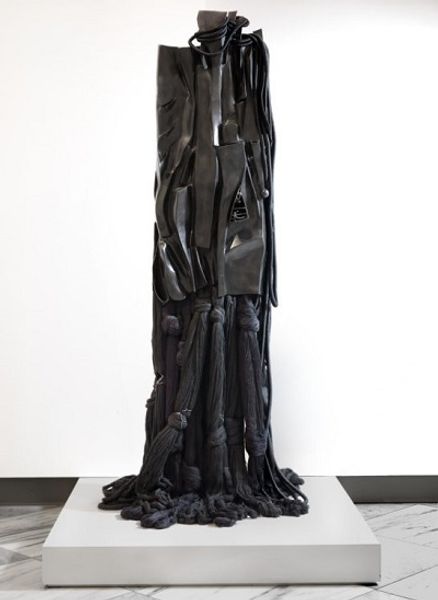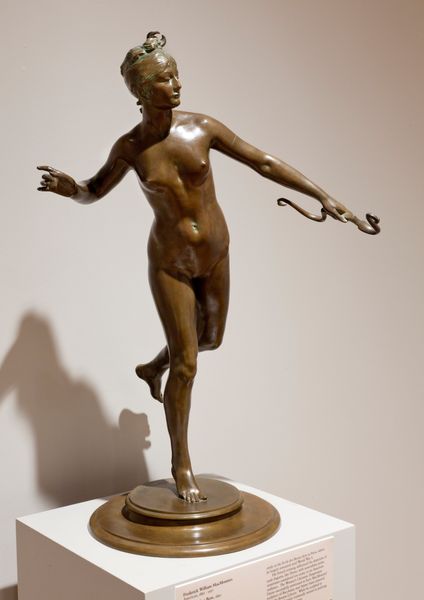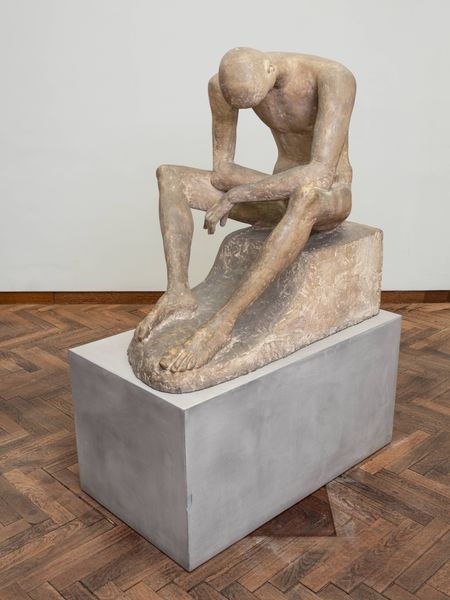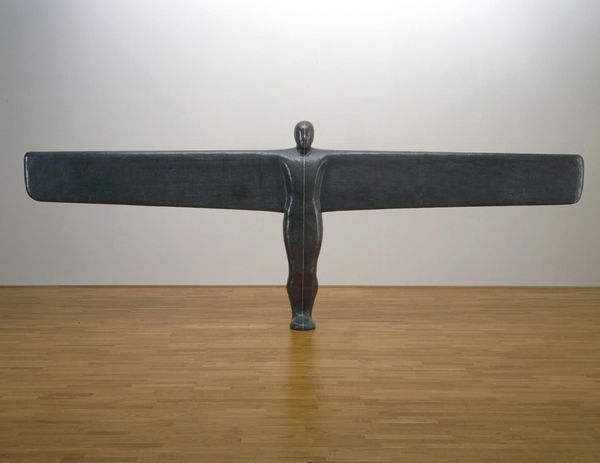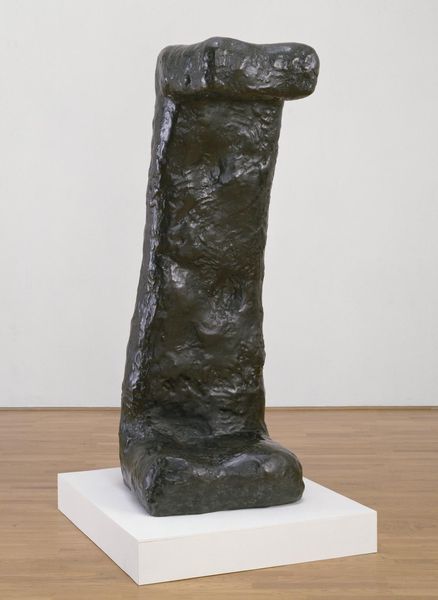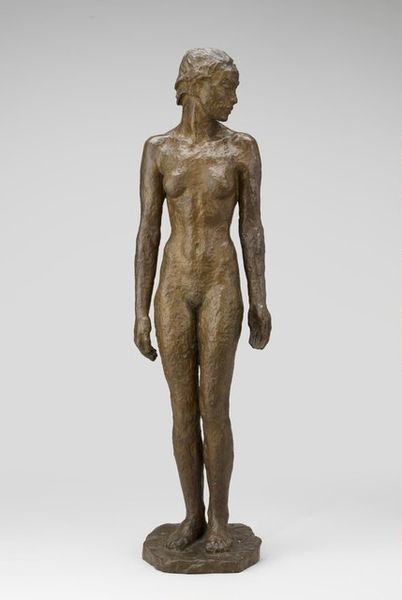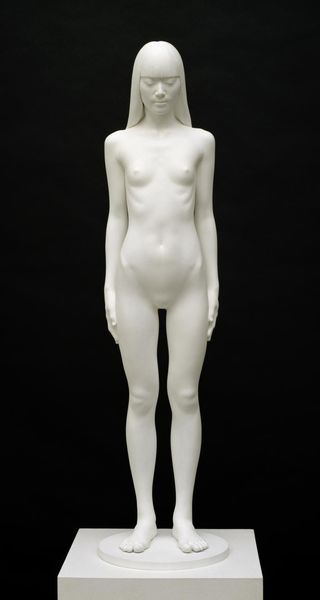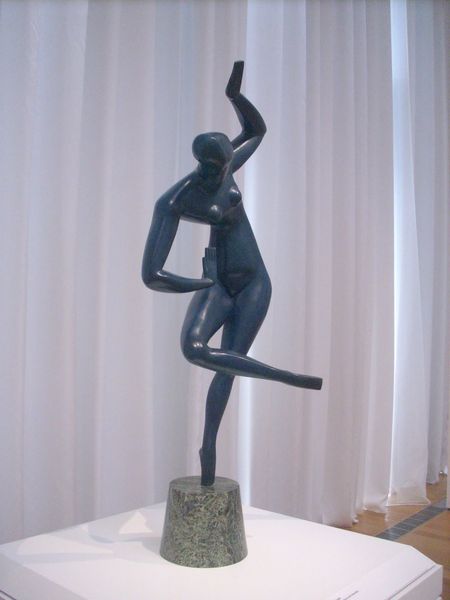
bronze, sculpture
#
sculpture
#
bronze
#
figuration
#
sculpture
#
surrealism
#
modernism
Copyright: Germaine Richier,Fair Use
Curator: Let's turn our attention to Germaine Richier’s "Diabolo" from 1950, a bronze sculpture that resides within the realm of figuration, a distinct characteristic of the artist’s work. Editor: My first impression is one of fragility and tension. The spindly figure, encased in taut wires, looks simultaneously vulnerable and dangerous. It's unsettling. Curator: Absolutely. The sculpture was made during a period marked by postwar anxiety, and it certainly reflects those sentiments. It suggests the body subjected to external forces, like social or political pressures, if we want to take a historic reading. Editor: The bronze, though static, seems to capture a moment of dynamic potential. Richier clearly understood her materials— the roughness of the bronze contrasts beautifully with the sharp lines of the wire, almost implying movement and constraints. Curator: Consider the historical context: this was exhibited at a time when sculpture was moving away from the classical ideal towards something more raw and expressive. There's a distinct pushback against traditional beauty standards. Editor: Yes, and what labor went into the construction—the modeling of the bronze, the precise application of the wires. It seems deliberately unsettling, rejecting any notions of mass production, pushing for human labor being so evidently shown, even celebrated. Curator: Richier was undeniably playing with surrealist notions too, distorting the human form. The use of wire is critical – it’s not just decorative; it binds and manipulates. There’s an element of performance or control, similar to what you'd see in the Commedia dell’Arte. Editor: I am moved by how "Diabolo" is a piece about pushing artistic boundaries and reflecting on humanity. It forces a re-evaluation of material, form, and content, turning traditional expectations on their head, really a testimony to human potential under pressure. Curator: Reflecting on Richier's "Diabolo" reminds us that art can be a response, sometimes a defiant one, to the society we inhabit, sparking conversations around form, meaning, and the politics of representation.
Comments
No comments
Be the first to comment and join the conversation on the ultimate creative platform.
